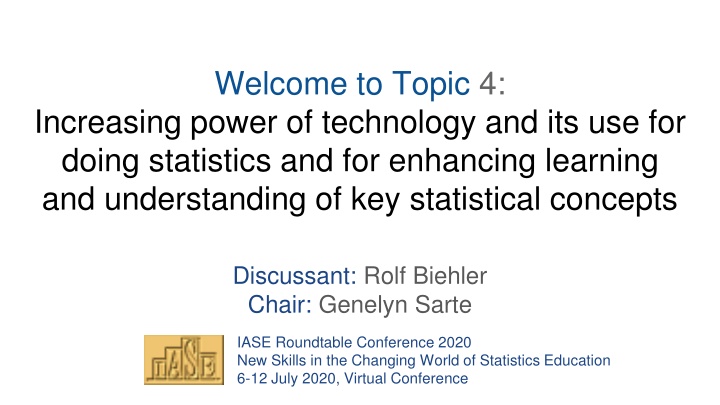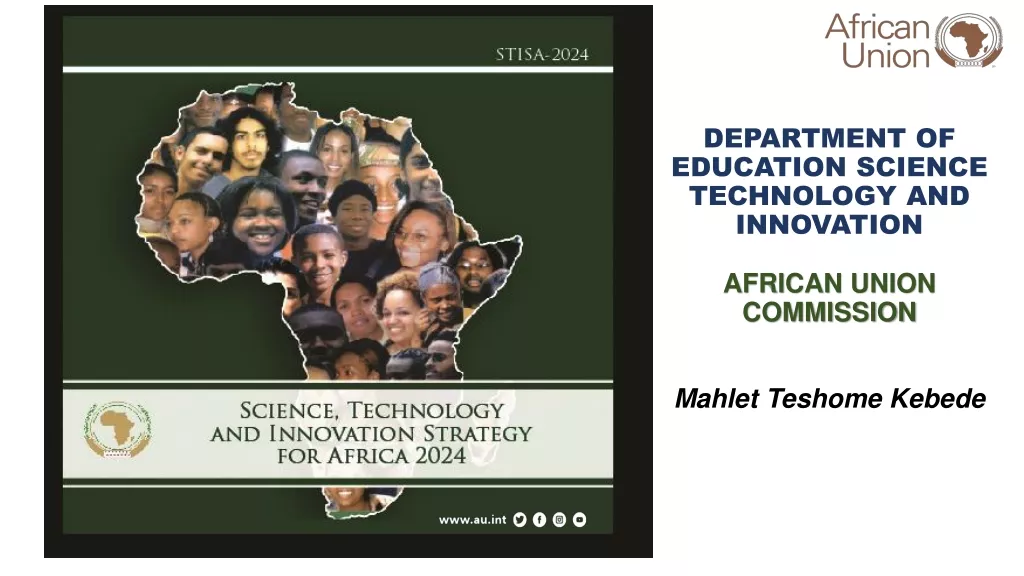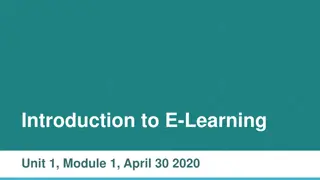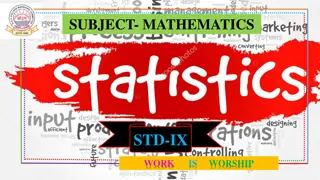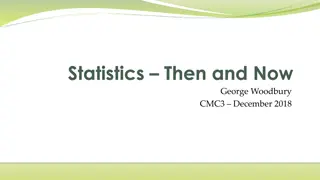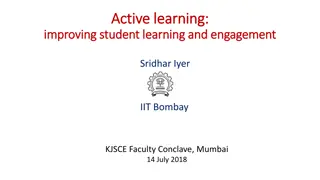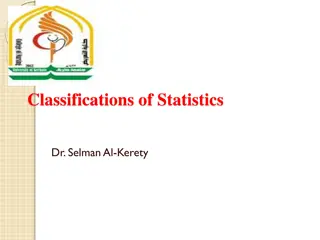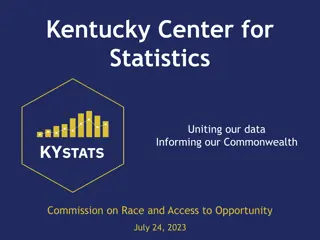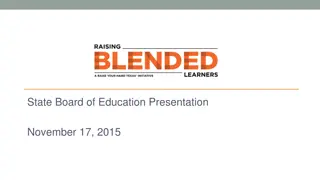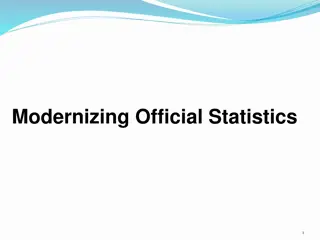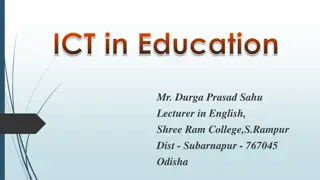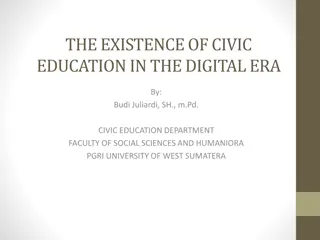Enhancing Learning Through Technology in Statistics Education
Increasing power of technology is utilized for statistics and learning key concepts. Highlight on mobile applications for data science courses in developing countries, challenges faced, and advancements needed for better integration of technology in learning environments.
Download Presentation

Please find below an Image/Link to download the presentation.
The content on the website is provided AS IS for your information and personal use only. It may not be sold, licensed, or shared on other websites without obtaining consent from the author.If you encounter any issues during the download, it is possible that the publisher has removed the file from their server.
You are allowed to download the files provided on this website for personal or commercial use, subject to the condition that they are used lawfully. All files are the property of their respective owners.
The content on the website is provided AS IS for your information and personal use only. It may not be sold, licensed, or shared on other websites without obtaining consent from the author.
E N D
Presentation Transcript
Welcome to Topic 4: Increasing power of technology and its use for doing statistics and for enhancing learning and understanding of key statistical concepts Discussant: Rolf Biehler Chair: Genelyn Sarte IASE Roundtable Conference 2020 New Skills in the Changing World of Statistics Education 6-12 July 2020, Virtual Conference
Session 1 Thursday July 9, 8:00-9:00 GMT Topic 4: Increasing power of technology and its use for doing statistics and for enhancing learning and understanding of key statistical concepts Title Presenter Enabling statistics undergrads of developing countries to take their first steps toward data science through mobile applications Saleha Naghmi Habibullah (Pakistan) New Zealand Teachers' Perceptions when Hearing Waiting-Time Distributions Stephanie Budgett (New Zealand)
Paper by Saleha Naghmi Habibullah (Pakistan) A major concern How can we support learners in developing countries? What is important content in Introduction to Data Science courses Which kind of technology is affordable? By individual students In computer labs in universities Important reference National Academies of Sciences, Engineering, and Medicine (2018). Data Science for Undergraduates: Opportunities and Options. Washington, DC: The National Academies Press.
Paper by Saleha Naghmi Habibullah (Pakistan) For what purposes are mobile apps suited most, where are there limitations? Promising applications small interactive learning enviroments Tutorial videos Interactive texts Difficulties Data preparation, heavy graphical data analysis with multiple displays Reproducible analysis with notebooks (Jupyter / Python; R/markdown) Affordances and constraints may be different with tablet computers
Paper by Saleha Naghmi Habibullah (Pakistan) Challenges not only for developing countries Access to technology by students Designing support for students learning an adequate use of technology Designing learning environments in which technology is integrated
Paper by Amy Renelle and Stephanie Budgett (New Zealand) New idea for using technology: Using sound: hearing randomness and hearing different kinds of distributions What kind of comparative research can be designed to find out the contribution of sound in comparison or in addition to other (traditional) interactive representations? What are characteristics of future learning environments including sound? How can we integrate sound experiments into teaching?
Session 2: Saturday July 11, 7:00-8:00 GMT Title Presenter Learning analytics as a tool to permanently feedback lecturers and teaching assistants Florian Berens (Germany) Simulation-based Exploration of Surveys with Non-response Von Bing Yap (Singapore)
Paper by Florian Berens New types of technology use (also well suited for Covid 19 situation) Learning platform with Quizzes, with immediate feed-back Chat bots that are answering statistical questions Audience response systems Communication spaces, also among the staff (lecturer, assistant, student tutors) Learning platfom allows collection of user data Improving the chat bot s performance Analyzing students successes and misconceptions Analyzing the use of material (downloads) Results of learning analytics as an input for improving teaching and learning processes
Paper by YAP Von Bing Simulation-based Exploration of Surveys with Non-response Demonstrating the effects of non-response bias in modelling bivariate situations by simulation (current teaching focusses on bias in univariate situation) Discussion focused on bias and confounding in the context of data science Situation is much worse with big, messy data than in classical surveys Shift from statistical inference to a broader view of prediction (with training and test data, importance of replication) is recommendable Context knowledge has to be used to deal with bias (post-stratification as an option), bias is a central problem in data driven automatic decision algorithms
